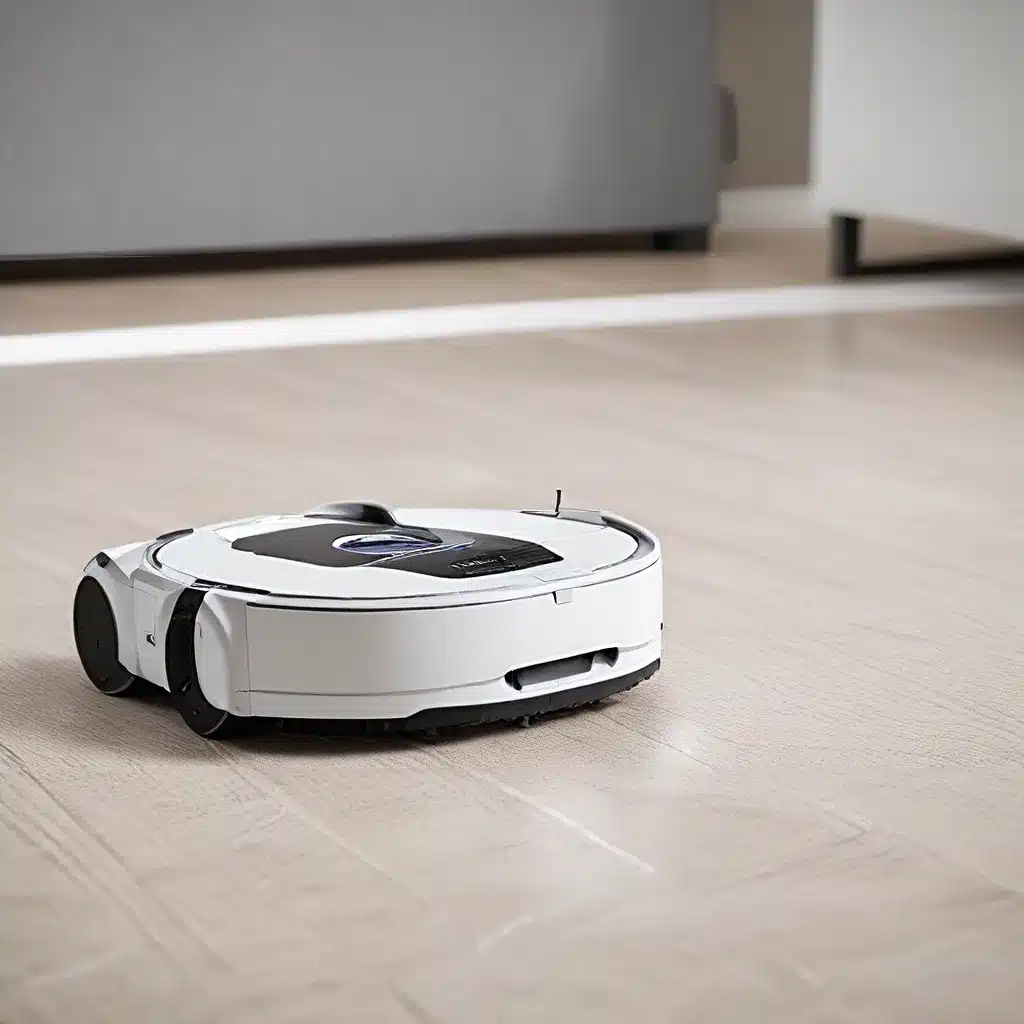As someone who’s always on the lookout for the latest innovations, I have to admit – I’ve become a bit of a cleaning tech enthusiast lately. Call me a neat freak, but there’s just something so satisfying about discovering new ways to keep things spick and span, you know? And let me tell you, the world of robotic cleaning devices is where it’s at these days.
The Rise of Robotic Cleaning Solutions
Now, I know what you’re thinking – robots cleaning airports? Isn’t that a bit, I don’t know, weird? But trust me, this is no longer just a futuristic idea. The COVID-19 pandemic has completely transformed the cleaning game at airports. Gone are the days of cleaners working quietly in the shadows – these days, robotic cleaning devices are out in full force, keeping passengers safe and reassured.
In fact, a recent survey by RetailWire and Brain Corp found that 72% of US retailers expect customer demand for cleanliness to remain high even after widespread vaccine distribution. And that’s not just in the retail world – airports are under immense pressure to maintain impeccable standards of hygiene and sanitation. As health experts have predicted, the need for virus monitoring and management is here to stay. Airports simply can’t afford to slack off on cleaning, and that’s where these robotic wonders come in.
Cleaning Robots in Action
One of the big game-changers in the robotic cleaning world is the use of disinfectant spray robots. These innovative devices are equipped with the ability to sanitize vast areas of the airport, reaching into crevices and corners that traditional cleaning methods might miss. And get this – some of these robots even use specialized sprays that seep deeper into surfaces than your average cleaning products. Talk about a deep clean!
But wait, there’s more. Some airports have even taken things to the next level with UV-C light robots. These bad boys are specifically designed to stop the spread of COVID-19 by blasting surfaces and the air with powerful UV-C rays. Now, I know what you’re thinking – isn’t that dangerous for humans? Absolutely, which is why these robots can only be deployed when the area is completely clear of passengers and staff. It’s a small price to pay for the peace of mind it provides, if you ask me.
Transforming the Cleaning Process
One of the most fascinating things about the rise of robotic cleaning solutions is how it’s completely transformed the way airports approach the cleaning process. Instead of relegating the cleaning tasks to the dead of night or off-peak hours, airport operators are now making it a point to clean in full view of passengers. This newfound transparency has helped reassure travelers that their safety is a top priority.
But the benefits of robotic cleaning go beyond just optics. These automated solutions free up staff to focus on other essential functions, while also increasing the overall efficiency and level of cleanliness in the airport. It’s a win-win situation all around.
Wider Industry Adoption
Of course, it’s not just airports that are embracing the power of robotic cleaning. Cleaning services businesses like ours have also been keeping a close eye on these developments, eager to explore how we can incorporate similar technologies into our own operations.
And the impact of these robotic cleaning solutions extends far beyond the aviation industry. Schools, hotels, hospitals, sports stadiums, and even shopping malls have all begun to explore the use of UV-C light robots and other disinfectant-spraying devices to keep their spaces clean and their occupants safe.
The Future of Cleaning Automation
As exciting as all of this is, I can’t help but wonder – where do we go from here? The source information suggests that there are different “tiers” of cleaning automation, ranging from technologies that airports are already familiar with to those that are truly revolutionary and disruptive.
It’s fascinating to think about how the industry might evolve as these more transformative technologies start to come into play. Will airports be ready to embrace them, or will they take a more cautious, “wait-and-see” approach? And what kind of impact could these cutting-edge cleaning solutions have on the passenger experience, staff productivity, and overall operational efficiency?
Conclusion: Embracing the Future of Cleaning
Regardless of what the future holds, one thing is clear: the rise of robotic cleaning devices has already had a profound impact on the way we think about cleanliness and hygiene, especially in high-traffic public spaces like airports. And as someone who’s always been a bit of a cleaning enthusiast, I can’t help but get excited about the possibilities.
So, what do you think? Are you ready to embrace the future of cleaning automation, or are you still a bit skeptical? Either way, I’d love to hear your thoughts. After all, the more we can learn from each other, the better we can prepare for the cleaning revolution that’s just over the horizon.







